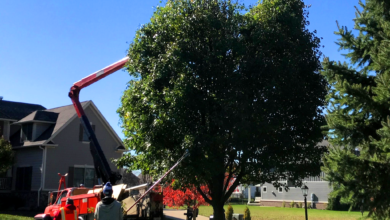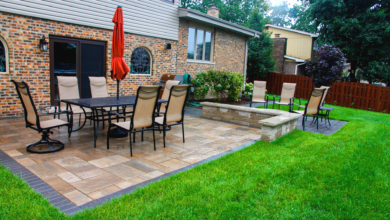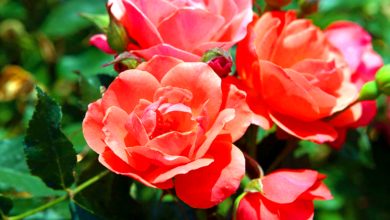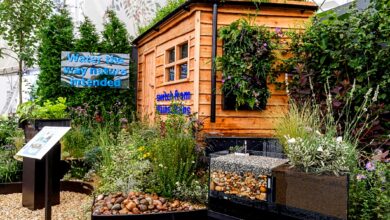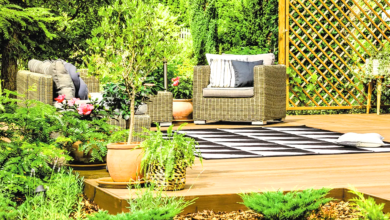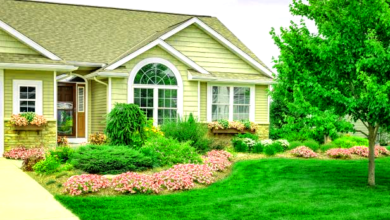Low Water Landscaping Ideas for Drought-Prone Areas
This comprehensive guide explores practical, creative, and sustainable solutions to low water landscaping while enhancing the aesthetic appeal of your yard.

In an age where climate change is increasingly influencing weather patterns, droughts are becoming more frequent and severe in many parts of the world. Homeowners and property managers in drought-prone regions face a pressing challenge: how to maintain beautiful, functional landscapes without relying on excessive water use. Fortunately, with the right approach, it’s entirely possible to create lush, eye-catching outdoor spaces using low water landscaping ideas.
This comprehensive guide explores practical, creative, and sustainable solutions to reduce water consumption while enhancing the aesthetic appeal of your yard. Whether you are dealing with a tiny urban garden or a sprawling suburban lawn, these low water landscaping ideas can help you conserve resources, save money, and support environmental sustainability.
What is Low Water Landscaping?
Low water landscaping, often called xeriscaping, is a method of designing outdoor spaces to minimize water use. It incorporates drought-tolerant plants, efficient irrigation systems, and thoughtful design principles. The goal is to create landscapes that thrive with minimal supplemental watering.
Benefits of Low Water Landscaping
- Water Conservation: Significantly reduces your outdoor water use.
- Cost Savings: Lower water bills and reduced maintenance expenses.
- Eco-Friendly: Promotes native plants and reduces runoff and pollution.
- Low Maintenance: Requires less mowing, fertilizing, and pruning.
- Aesthetic Versatility: Offers a wide range of design styles and plant choices.
Planning Your Low Water Landscape
Before diving into planting and hardscaping, proper planning is essential. Here are the key steps to design a low water landscape that meets your needs and suits your climate:
1. Analyze Your Site
- Sunlight Exposure: Determine which areas receive full sun, partial shade, or full shade.
- Soil Type: Sandy, clay, or loamy soils affect water retention and plant selection.
- Drainage: Identify any areas where water pools or runs off quickly.
2. Group Plants by Water Needs
This practice, known as hydrozoning, ensures that each zone receives the right amount of water. Place high water-use plants together and keep them close to water sources, while drought-tolerant plants can occupy the drier areas.
3. Choose a Focal Point
Design around a central element like a rock garden, sculpture, water feature (such as a recirculating fountain), or specimen plant. This adds structure and visual interest to the landscape.
4. Plan for Efficient Irrigation
Use drip irrigation systems or soaker hoses that deliver water directly to plant roots, reducing evaporation and runoff. Consider installing a smart irrigation controller that adjusts watering based on weather conditions.
Top Low Water Landscaping Ideas
1. Native Plant Gardens
Native plants are naturally adapted to local climate and soil conditions, making them ideal for drought-prone areas. They require minimal watering, fertilizing, and pest control. Examples include:
- California Poppy (Eschscholzia californica)
- Purple Coneflower (Echinacea purpurea)
- Desert Marigold (Baileya multiradiata)
- Texas Sage (Leucophyllum frutescens)
2. Succulent and Cactus Gardens
Succulents and cacti are iconic choices for low water landscaping. They store water in their leaves and stems, enabling them to survive long dry periods. Popular options include:
- Aloe Vera
- Agave
- Echeveria
- Golden Barrel Cactus (Echinocactus grusonii)
3. Rock Gardens
Rock gardens are low-maintenance and water-efficient. Use a mix of stones, gravel, and drought-tolerant plants to create a textured, naturalistic look. Choose hardy perennials like:
- Sedum
- Thrift (Armeria)
- Ice Plant (Delosperma)
4. Mulching for Moisture Retention
Apply organic mulch (like bark chips or straw) or inorganic mulch (like gravel) around plants to reduce evaporation, suppress weeds, and regulate soil temperature. Mulching is a key component of effective low water landscaping ideas.
5. Permeable Hardscaping
Replace thirsty lawns with hardscaping elements such as:
- Decomposed granite pathways
- Gravel patios
- Flagstone walkways
- Permeable pavers
These allow rainwater to soak into the ground, reducing runoff and promoting groundwater recharge.
6. Rainwater Harvesting Systems
Collect and store rainwater in barrels or cisterns for later use in irrigation. This reduces reliance on municipal water supplies and enhances sustainability.
7. Drought-Tolerant Lawns
Replace traditional turf with low water alternatives such as:
- Buffalo Grass (Buchloe dactyloides)
- Zoysia Grass
- Kurapia ground cover
- Artificial turf for decorative purposes
8. Edible Xeriscaping
Grow drought-resistant edible plants like:
- Rosemary
- Thyme
- Lavender
- Chives
- Artichokes
- Figs
These provide beauty and functionality while conserving water.
9. Shade Structures and Canopy Trees
Strategically placed pergolas, trellises, or drought-tolerant shade trees like mesquite or palo verde can reduce evaporation and create microclimates that retain moisture.
10. Contour Landscaping and Swales
Shape the land to slow, capture, and redirect water. Swales, berms, and terraces help manage runoff and promote infiltration, making your landscape more water-efficient.
Best Drought-Tolerant Plants for Landscaping
Here are some top-performing plants ideal for low water landscapes:
Ground Covers:
- Lantana
- Creeping Thyme
- Blue Star Creeper
Shrubs:
- Manzanita
- Russian Sage
- California Lilac
Grasses:
- Blue Fescue
- Fountain Grass
- Muhly Grass
Trees:
- Olive Tree
- Desert Willow
- Crape Myrtle
Maintenance Tips for Low Water Landscapes
- Water Deeply and Infrequently: Encourage deep root growth by watering thoroughly but less often.
- Regularly Inspect Irrigation Systems: Fix leaks and adjust settings as needed.
- Prune Wisely: Remove dead or overgrown branches to maintain plant health.
- Weed Diligently: Weeds compete for moisture; keep them under control.
- Replenish Mulch: Maintain a 2-3 inch layer for optimal moisture retention.
Sustainable Landscaping Practices
Incorporating sustainable practices enhances the effectiveness of your low water landscaping ideas:
- Composting: Enrich your soil naturally and improve water retention.
- Using Recycled Materials: Repurpose old bricks, wood, and stones for paths and borders.
- Attracting Pollinators: Plant flowers that draw bees, butterflies, and hummingbirds.
- Limiting Lawn Areas: Lawns are among the thirstiest landscape elements; scale them down.
Final Thoughts
Transitioning to a low water landscape doesn’t mean compromising on beauty or functionality. By combining drought-tolerant plants, smart irrigation, creative design, and sustainable practices, you can craft a vibrant outdoor space that thrives in even the driest conditions. With these low water landscaping ideas, not only will you save water and reduce maintenance, but you’ll also contribute positively to your local ecosystem.
Ready to start your transformation? Whether you’re refreshing an existing yard or starting from scratch, remember that every drop counts—and every plant placed with purpose brings us closer to a more resilient, water-wise future.





